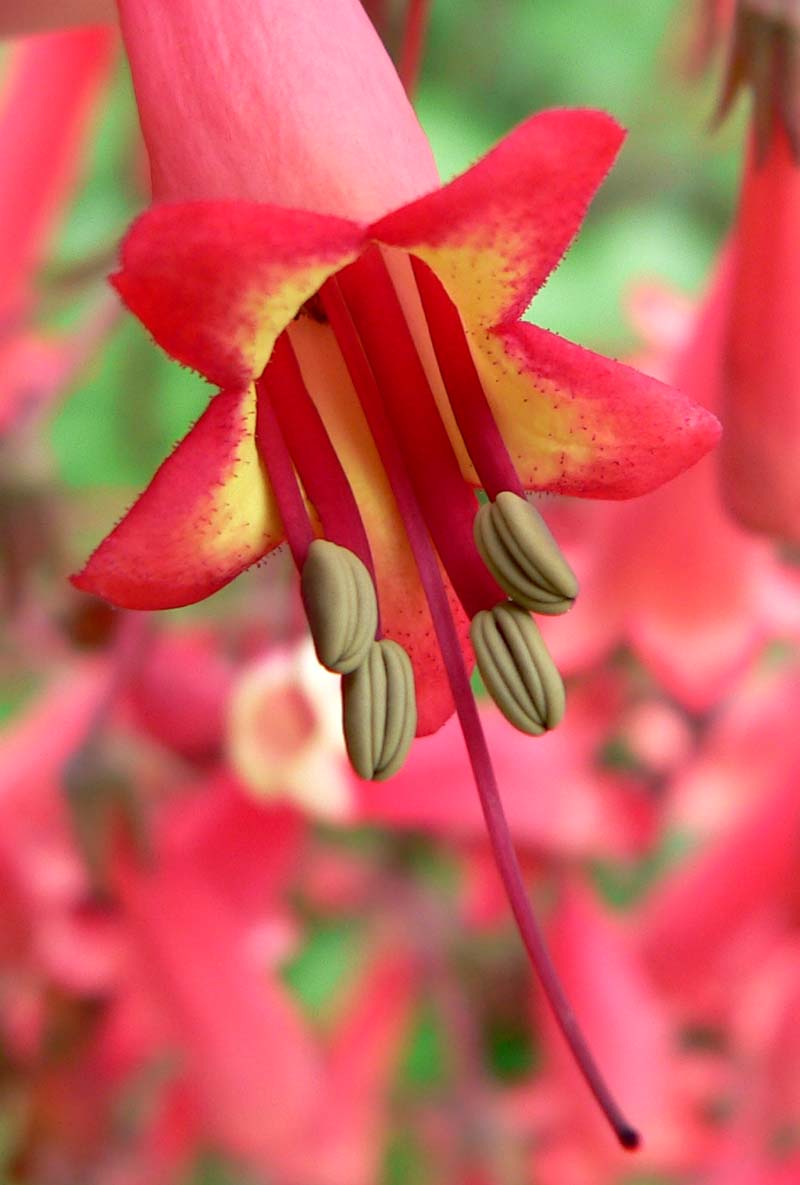Annual Exotica
Posted in Gardening Tips on May 6 2014, by Sonia Uyterhoeven
Sonia Uyterhoeven is the NYBG’s Gardener for Public Education.

If you would like to introduce some razzle-dazzle into your container displays this summer, I would suggest hunting down an unusual South African member of the mint family called Hemizygia ‘Candy Kisses’ (zone 9-11).
In the wild, Hemizygia (syn. Syncolostemon) needs to contend with drought and fire. It does this by producing a woody swollen root crown called a lignotuber. This tuberous crown holds starches to get the plant through times of deprivation and fire while keeping dormant buds intact and ready to grow.
You would never know that this lovely sagebush (Hemizygia) was so embattled by looking at it. It grows to 2 feet tall in this area; has fleshy, variegated foliage with a creamy edge; gaudy dark purple stems; and tall, upright, pinkish-purple blooms.
In flower, ‘Candy Kisses’ is not shy. For the earlier part of the summer you will be enjoying the variegated foliage and it will look akin to a variegated mint. The flowers will appear in late summer. If you grow it in a container, take it inside once the weather cools and it will continue to grow through the winter.
In terms of its cultural requirements, ‘Candy Kisses’ is a real treat. It is a dependable, no-nonsense member of the mint family—easy to grow in part shade to full sun while handling heat and drought like a champion. Give it a good pruning after flowering to keep its shape. Like other members of the mint family, its aromatic foliage acts as a pest deterrent for deer, rabbits and the like.
Another South African beauty that I am delighted to see in the nursery trade is the Cape mallow (Anisodontea × hypomadara). I fell in love with this mallow years ago when I was visiting the Royal Horticultural Society’s garden at Wisley in Surrey, England. It grows to a little over 4 feet tall and maintains a nice form—flowering throughout the summer to frost. It has a quintessential mallow flower with a happy, hibiscus-type face that modulates from light pink to dark.

An exotic annual that we have grown successfully for years in the garden is Cape fuchsia (Phygelius). They act in a similar fashion to dahlias in a seasonal display, providing good height (generally 3-4 feet), flowering prolifically, and adding structure to the border with their nice shrubby form. Unlike dahlias with their showy, full-rounded heads, Cape fuchsias have tubular flowers that dangle gracefully from spires.
Two varieties to look for are the 3-4 foot tall ‘Devil’s Tears’, which displays a predictably red flower that will bleed through your border, and the 4 foot tall ‘Winchester Fanfare’ that produces candelabra spires of blooms in salmon with a yellow throat. Newer on the scene is the compact Phygelius ‘Tie Dye Yellow Submarine’. This pipsqueak only reaches 10-14 inches and is covered with bright yellow tubular flowers.

Images courtesy of Wikimedia Commons.

